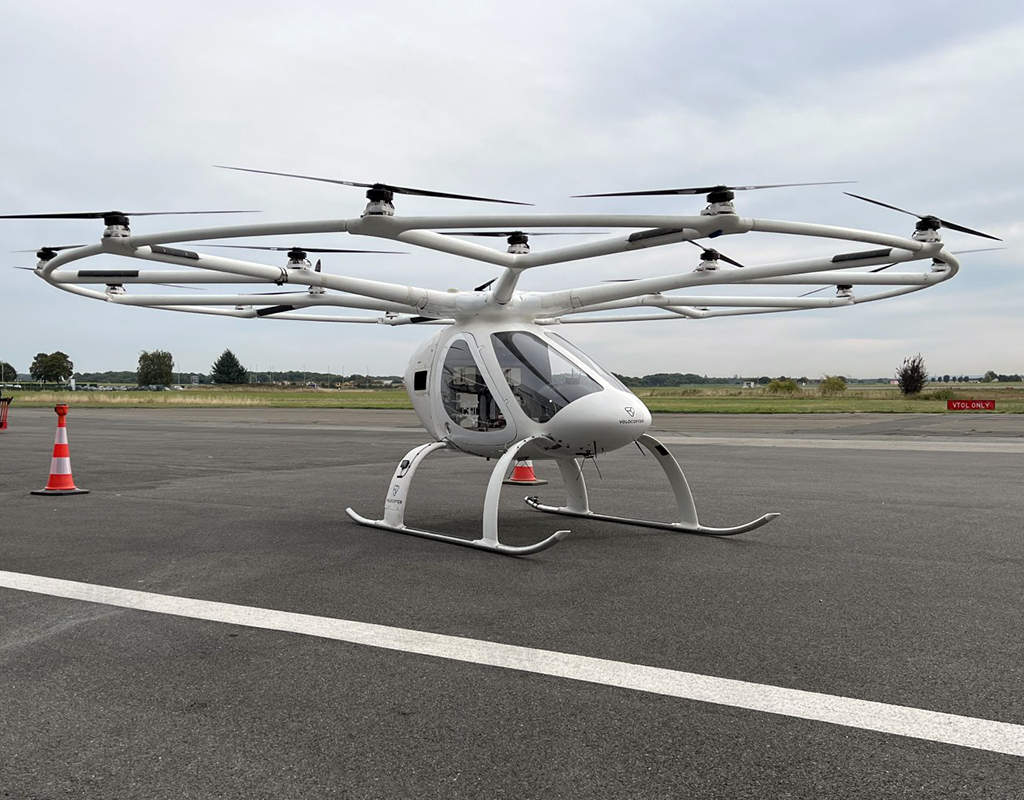
A week-long series of deconfliction flight tests at Pontoise – Cormeilles airfield near Paris, France, concluded on Sept. 23. This was the third in a set of six large-scale demonstration activities as part of the CORUS-XUAM project, designed to simulate a variety of real-world scenarios to show how unmanned aircraft system traffic management (UTM) and air traffic management (ATM) can work together and with multiple aircraft types.
At a presentation at the Groupe ADP facility, Andrew Hately, who is in charge of U-space concept of operations (CONOPs) development at Eurocontrol and is the technical coordinator of CORUS-XUAM, explained the context of the tests.
The project has been running for two years and is funded by the European Union’s initiative Single European Sky ATM Research (SESAR) Joint Undertaking. It consists of 19 partners and 11 related third parties.
Hately said the group is now at an initial implementation of what can be described as “U-Space 1.0.” This can support low-density operations in a low-risk environment with commensurately low surveillance requirements. CORUS-XUAM is developing the CONOPs beyond this phase, to develop U-space for more demanding urban air mobility (UAM) operations.
A revised version of the CONOPs should be available on the CORUS-XUAM website in the next few weeks and will be open for comment, which will lead to the final deliverable expected to be published in early 2023.
The successful flight tests at Pontoise airfield were conducted jointly using M3 System’s BOREAL remotely piloted aircraft system (RPAS), Pipistrel’s crewed Velis Electro — the only type-certified electric aircraft in commercial service — and Volocopter’s full-scale, remotely piloted 2X eVTOL prototype. Pipistrel used the conventional ATM through the control tower, while Volocopter and M3 Systems used the UTM system provided by Hologarde, another project partner.

The first test that was carried out was a double diversion scenario. In this case, an unmanned aircraft system (UAS) represented by the BOREAL was flying to the vertiport, which was declared closed when the aircraft was already in flight. The U-space service provider (USSP), Hologarde, initially suggested an alternative vertiport via the system’s digital communications protocols. The test then simulated that the initial destination became available again, so the UAS could resume its nominal mission.
The second scenario added some complexity, as it included two aircraft — with the Volocopter 2X flying remotely, and the M3 BOREAL sharing the airspace. Nadja Löffler, project lead aircraft operation at Volocopter, explained how they filed a flight plan using the Hologarde system. During the flight, the BOREAL simulated approaching the Volocopter 2X’s protection bubble, and the USSP promptly and successfully providing deconfliction instructions to the encroaching aircraft.
The third and final test introduced a crewed aircraft — the Pipistrel Velis Electro. Rocco Nannavecchia, safety and reliability engineer at Pipistrel, described how the unexcepted unavailability of the planned final approach and take-off (FATO) area caused by a simulated aircraft diversion requiring priority was handled as expected by the UTM system. This was done without incurring extra workload on the pilot of the crewed aircraft. Martin Tuaz, product owner UTM UAM at Hologarde, explained that in this test, Volocopter’s aircraft had also filed a flight plan, and as soon as Pipistrel’s aircraft requested priority, the 2X eVTOL aircraft was immediately provided with a route to an alternate FATO, thus precluding any conflict.
All stakeholders in these tests — the most comprehensive ones flown to date in the CORUS-XUAM framework — said they were satisfied with the outcomes.
These flight tests are another brick showing how the Pontoise – Cormeilles sandbox is being used to productively test all aspects of UAM. The next step of the sandbox is to conduct testing at the dedicated UAM passenger terminal that is now at a very advanced phase of construction.


